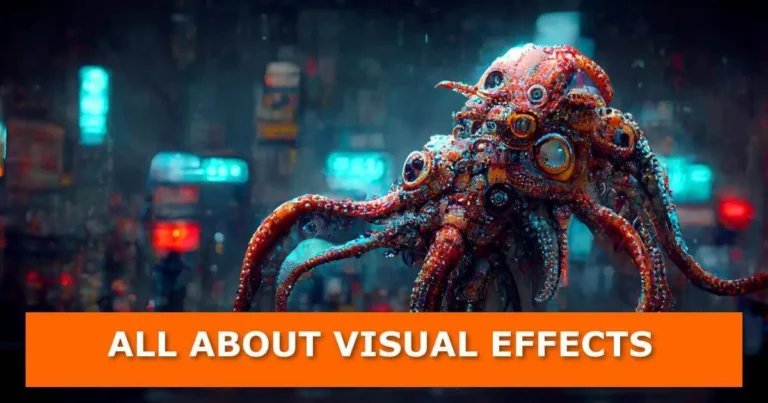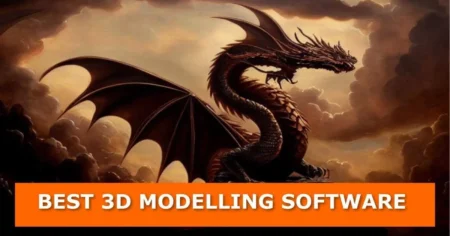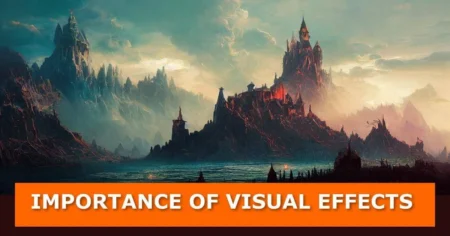Visual effects enable filmmakers to construct breathtaking imagined universes and perform stunts that would be impossible to capture in real life, but they aren’t limited to blockbuster feature films. To express their stories more effectively, filmmakers also use subtle visual effects in more realistic films.
What are visual effects?
Visual effects (VFX) in filmmaking refers to the creation or manipulation of any on-screen imagery that does not exist physically in real life. Filmmakers can use visual effects to create locations, objects, creatures, and even people that would be difficult or impossible to film in a live-action setting. In cinema VFX, live-action footage is commonly combined with computer-generated graphics (CGI).
Why are visual effects important?
I will use two examples to explain why visual effects are important in modern-day filmmaking
1. In filmmaking, sometimes a scene may require creating environments that do not exist but look realistic to the viewer. However, these environments would be menacing, expensive, impractical, or simply impossible to capture on film. This is where visual effects come in. Such an environment can be easily created using computer software and integrated into a scene. Therefore, eliminating creative and expense barriers for the scene.
2. A scene may require a character to do something dangerous like be in a car explosion or fall into a volcano. We do not want our actors dying during filming now do we? Visual effects make such scenes possible to create without endangering the lives of the cast and crew.
Visual effects simply eliminate creative and expensive barriers that would have made making amazing films impossible.
How are visual effects created?
Visual effects require special computer software to create. There are different techniques used to create visual effects depending on the requirements of a scene. Top visual effects studios have VFX supervisors and teams of VFX artists, each with their particular area of expertise. The majority of VFX can be classified into one or more of the following 3 categories:
1. CGI
CGI stands for computer-generated imagery and refers to digitally made visual effects in cinema and television. These computer images can be 2D or 3D, however, when discussing 3D visual effects, CGI is most commonly used. The production of a 3D depiction of any item, surface, or live organism is the most talked-about process in CGI. When artists utilize CGI VFX to create something that doesn’t exist, such as a dragon or monster, the results are most noticeable. However, visual effects may also be subtle; for example, VFX artists might utilize VFX to fill a stadium with a cheering crowd or de-age an actor to make them look younger, like in Martin Scorsese’s film The Irishman.
2. Compositing
Compositing, often known as “chroma-keying,” is the process of VFX artists combining visual components from different sources to make them appear to be in the same spot. This visual effect approach necessitates recording with a green or blue screen, which compositors then replace with another element in post-production using compositing software. Matte paintings, illustrations of landscapes or sets composited with live-action footage, were an early kind of compositing that created this look. The Emerald City landscape in The Wizard of Oz is a well-known example of a matte painting utilized as an optical composite.
3. Motion capture
Motion capture is the technique of digitally recording an actor’s motions and then translating those movements to a computer-generated 3D model, sometimes abbreviated as “mocap.” This method is referred described as “performance capture” when it includes recording an actor’s facial expressions. One popular motion-capture approach includes putting an actor in a motion-capture suit with specific markers (or, in the case of performance capture, dots painted on the actor’s face) that a camera can monitor. Motion capture software is used to transfer the data acquired by the cameras onto a 3D skeleton model.
Special effects (SFX) vs Visual effects, what’s the difference?
Visual effects differ from special effects in that they require the use of a computer and are added after shooting. Special effects (SFX) are created in real-time during filming and include pyrotechnics, fake rain, animatronics, and prosthetic makeup. All VFX is added in post-production after the shoot.
A VFX example would be dragons flying through the sky in Game of Thrones, or a spaceship flying through space in Star Wars.
Software that create visual effects
There is several software used to create visual effects. Some of them are free and others are exclusive to those who have the budget or those who can’t afford it. The ones considered industry leaders in visual effects software are Natron, Hitfilm Pro, Blender, After Effects, Fusion, Flame, and Nuke. I have gone into detail about the above software in the ‘Best visual effects (VFX) software for you‘ article.
Who uses visual effects?
Today, visual effects (VFX) are heavily used in almost every film produced. Avengers: Endgame (2019), the highest-grossing film of all time, made extensive use of visual effects. VFX and CGI were used in approximately 70% of the film. Aside from films, VFX is also used in television shows, music videos, and web series.
How much do visual effects cost?
VFX’s cost largely depends on the project at hand. They can cost as low as $100 for a simple green screenshot to as high as $100,000,000 for a feature enterprise film. I have gone in-depth about factors that affect VFX cost in the ‘Why visual effects are costly‘ article.
Where do I get visual effects?
This is a question you might be asking yourself now. We can assist. We help you do more with less. Whether you are a movie company looking to expand, an artist producing your first music video, or a freelancer taking on a big job. We do the visual effects that separate good from great.







I really appreciate your work. the whole point very easy to understand.
Hi Kamran
Thank you for the kind words.
We are happy that we are of assistance to you.